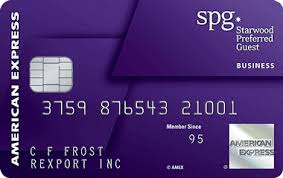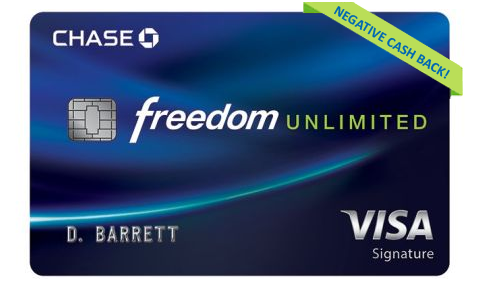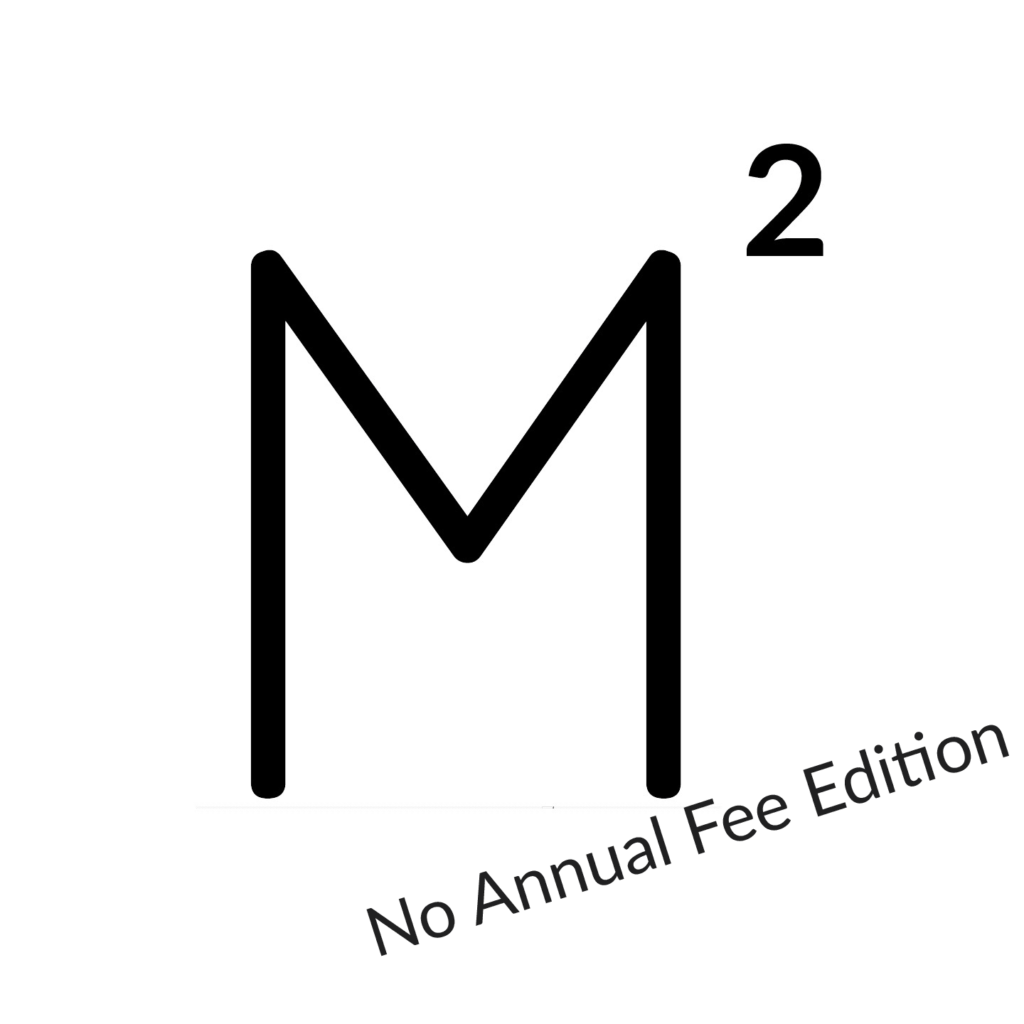AmEx SPG cards have long been one of the best credit cards for unbonused spend in the points & miles community.
Although the card only earned one point per dollar (and still does through August 1, 2018) it was a good play for many because it earns Startpoints. Starpoints have historically been valuable because of favorable redemption rates at Starwood hotels -and- they transfer 20,000:25,000 to many airlines.
The Starwood Preferred Guest loyalty program was brilliantly crafted. The jackpot element associated with Starpoints made them so valuable that, ironically, many people rarely used them. They were too precious!
In reality, although they could be considered a 4th flexible bank point program, their utility was more restricted than say Chase Ultimate Rewards.
To use them for effectively flights you needed to navigate award availability. And to use them for hotels you were restricted to brands within the Starwood umbrella.
Things are changing with the Marriott Acquisition of Starwood
There are a ton of changes coming in the merged Marriott/SPG merger but for today’s discussion we’re focusing on changes on the earn side for the AmEx SPG credit cards, especially for unbonused spend.
As of August 1st, 2018 the AmEx SPG cards (personal and business) will earn 2 Marriott points per dollar on everyday spend rather than 1 Starpoint. This is 33% less rewarding than it’s been in the past since 1 Starpoint is worth 3 Marriott points.
This leaves many people, us included, considering what place if any the AmEx SPG cards have in our wallets.
What place did they have before? What’s your strategy going forward? Are they even worth keeping?

Sam: Great topic choice today Robert. One of the most interesting parts of the devaluation is that SPG/Marriott are actually *increasing* the earning rate on the SPG cards (from 1X to 2X per $), but in absolute value the value of the spend on the card is going down from 3X to 2X in Marriott points. How many people won’t even realize this is really a devaluation and just see 2>1? A little shameful if you ask me, but maybe today we can help people see the negative changes for what they are.
Historically, I liked to keep a high 5 figures to low 6 figures stash of SPG for ‘what if’ hotel bookings. In reality I’ve found that my travel patterns have not aligned with strong use of SPG, so I had really cooled off on the card the last 3 years or so, and my stash has dwindled. With the 3->2 devaluation Marriott not only killed my earning, but they also devalued the hotel I *most likely* would use my points at. This come on the heels of a March 2018 increase of that same hotel. All told I’m seeing a 25% increase in the cost to book a room at this one hotel, and increases in the 12-15% range at others I enjoy.
This 1-2-3 devaluation has caused me to actually start using the card again–but not for daily spend and really just to ‘tread water’ and still have enough points for X-nights at the hotel I’d prior to this had enough points for. I’ll realistically only get one more order in for gift cards before my statement cuts and then my focus will switch to getting as big a retention offer as I can for the card–and sock drawering it.
What are your thoughts on the merger and the associated issues surrounding it Robert?
Robert: There has been so much news flying around about this merger. I try to stay focused on the situation going forward rather than the short-term angles. Meaning, it’s more important to evaluate the NPV of the program going forward rather than getting a few more jabs in while the programs merge. Though I’ll admit the Travel Package lotto is intriguing.
Personally, I’ve oscillated on whether the AmEx SPG card was a good place to put unbonused spend. I think it was one of the better cards out there, but there are several other cards on par/ahead of it.
I think it can be a bit of a trap to discuss which card is the absolute best, forsaking all others. Especially if you’re manufacturing spend. And as you’ve wisely said in the past [paraphrasing]: “We need to get past the idea that real spend meaningfully moves the needle.”
Call me old fashioned but I think it’s a good idea to spread it around. Plus you never know when a card might throw a fraud alert and you need to quickly audible to another card. And some places don’t take AmEx so it’s good to have some Visa/MCs in the mix as well. That being the case I like to have 3 or 4 cards that I’ll use for unbonused spend.
With MS getting harder I find myself putting more spend towards meeting minimum spend requirements on new cards. It always seems like some rogue expense comes up and I wish I had a card I was working on meeting min spend on for the occasion – even if I have a card that’s relatively rewarding for unbonused spend.
And with MS getting harder it becomes more difficult to justify MSing at 1x – even for Starpoints. The margins are razor thin and the things you have to do take time I’m not interested in devoting to the craft.
So, that’s a roundabout way of setting up my viewpoint that there’s merit in mentioning a few good cards here. And one right answer might be that it doesn’t really matter if you’re not MSing. Or that unbonused spend is best applied towards minimum spend requirements on new cards.
Sam: Great points about spreading spending around to lighten the load on any one card. In all honesty: I’m going to really struggle here if we start to decouple MS from real spending as part of this discussion. I’m personally too biased towards increasing your ‘real’ point/mile/money haul with fake spending to be objective about real spending. So I’ll instead do a short discussion assuming someone does a little bit of funny business along with their real spend:

To me, one of the best Current cards for un-bonused spend is the Citi Double Cash Card(DC). 2% net cash back with price protection makes it hard to beat for day to day unbonused spend. However, for the next few months it is also lucrative for Plastiq payments. If you or I spend our real spending on the DC and then max out the rest of our credit line every month with Plastiq payments that real spending ‘costs’ us whatever you next highest earning card would have earned on that spending. This is the most basic form of opportunity cost.
Another example of this opportunity cost is the Chase Freedom Unlimited card. It is certainly popular for un-bonused spend, earning 1.5 Chase UR per $1. But last quarter you probably ‘lost’ 5,250 points by holding an Unlimited over a regular Freedom earning 5x in the grocery category. This quarter the Freedom category is gas–another easy one. How much real spending do you need to do outside of these 5x categories to make the unlimited a better card? (answer: $10,500 for every quarter you would have maxed out the bonus on a standard freedom).

Of course these are mostly academic examples–How many people can max out their Plastiq throughput right now? How many people max out all their freedoms every quarter? I can’t do either of those and I’m trying hard to do so. But these are considerations to make if we don’t’ decouple MS from real spend. Certainly if you’re not maxing out all ≥2% cards and you’re using a SPG card right now you are in fact ‘paying’ ≥2% opportunity cost for those SPG points. That doesn’t mean they’re not valuable, but it does mean you’d better redeem at better than .7 cents per Marriott point to “break even” at 2% opportunity cost.
Before I close out my section I want to make sure to push the idea that real spending on credit cards is net loss at almost all levels for almost everyone. I’ not sure if you want to get into why in this short post, but outside of minimum spend requirements your real spending is almost certainly not a net positive, even with 2% or higher rewards.
Overall, I agree with Robert’s take above that the absolute best card to use for unbonused everyday spending are ones in which you have a sign up bonus you’re working towards. The math on sign up bonuses is impossible to match elsewhere. An offer to spend $5,000 and earn 80,000 UR points means that every $1 you spend earns you 17 points per $1 (≥17% return on spend).
Robert: “A little bit of funny business along with their real spend” – I really like the sound of that. I’d consider myself in that camp. I’m not out ruthlessly manufacture spend but I don’t mind a little “point boosting”.
What you say about cash being better than credit cards is interesting. The last book I read was Dan Ariely’s Dollars and Sense. He goes into this phenomenon in detail.
The thing that stuck with me is how spending money causes pain. And the more tangible the physical outlay is, and how close in time that outlay is to consumption the more we realize that pain. The point is well taken, and one we should revisit in a future Shop Talk, but some things are easier to pay with credit cards (rental cars, kids summer camps, medical bills etc). So personally, I’m not shopping for a money clip just yet.

We talked about using unbonused spend towards minimum spend requirements. Hiding right behind that approach are cards which have bonuses at certain thresholds. The AmEx Platinum Delta Skymiles cards (personal and business) come to mind. In exchange for one lousy Delta mile for each dollar spent they kick off 10,000 Medallion Qualifying Miles for every $25,000 spent. This provides a path towards boosting your Delta status without setting foot on a plane. And if you’re adept at getting value out of Delta miles it can be a good play. But if you’re not setting foot on a plane, what good does status do you?
Similarly the no annual fee Merrill+ card [no longer available, but I bet a lot of people still have it] earns a full Delta SkyClub membership after spending $50,000 on the card annually, and the points are worth up to 2 cents a piece towards air travel. Not a terrible deal if you can make regular use of Delta lounge access for the whole family.
The Barclay JetBlue cards earn Mosaic status after spending $50,000 each year. That can be quite nice for those in a JetBlue market, and the card earns 2x at grocery so a little funny business can help get you there. Barclay hates me and is holding a grudge, otherwise I’d go for this angle.
I like to have a kicker at the end of slogging through thousands of dollars in unbonused spend. I think these types of cards are worth at least considering depending on your personal travel situations.
Sam: “Spending money causes pain.” I like that phrase. I really see that phenomenon you’re discussing about the consumption happening absent the pain of the spend with kids growing up now (versus when we were kids). Money has become a very abstract idea for these kids. Is a small plastic card money? Are coins in a video game? Not really, but swiping a card or redeeming virtual coins it lets you leave the store with whatever you want. The restraint to understand what that swipe means is higher level thinking that is difficult to teach without a physical manipulative like hard currency.
I think you’ve covered plenty of the threshold cards–I’ll add another: Fidelity’s 2% cash back Visa card, while nowhere near as great as it was is still a solid 2%+ card. I say 2%+ because every month or two I seem to get targeted for a bonus with a minimum spend threshold. These cash back bonuses push the effective cashback rate up between 2.2% and 2.5% depending on the targeted offers.

But there’s a certain amount of mental acrobatics that need to happen in order to properly juggle these cards, hit the thresholds and then move onto the next one. And if you’re locking up points for years you’re foregoing cash now for points later (with the threat of devaluation along the way). To avoid this I think we should switch gears and discuss excellent flat rate cards like the Alliant Credit Union 2.5% back (3% year one) cash back card.
Any favorites of yours that fall into this category Robert?
Robert: A personal favorite used to be the Bank of America Travel Rewards card. It earns 2.625% back on all spend if you have BofA Platinum Honors by having $100,000 invested with Merrill Edge. Merrill Edge offers signup bonuses (and they’re negotiable) so if you’re in a position to reallocate a brokerage account or even a self-directed IRA you’ve rolled over when switching jobs it could be worth looking into.

I say “used to be” because I recently switched to a BofA Premium Rewards card. It comes with a $500 signup bonus and also earns 2.625% everywhere when you have Platinum Honors, but the point cashout is simpler than with the Travel Rewards Card. To realize maximum value with the Travel Rewards card you to book travel then redeem points towards those purchases. With the Premium Rewards card you just cash out to checking at a penny per point. It doesn’t get much easier than that, though some of us may actually prefer [irrationally] having our points tied up in buckets that aren’t so easily converted into cash.
I do like the Chase Freedom Unlimited as well. It’s what I put in my wife’s wallet when she’s not working on minimum spend. When the card was first rumored I thought it was too good to be true. Because why would someone put spend on a Chase United card at 1x (while paying an annual fee) when they could earn 1.5x flexible points with the Chase Freedom Unlimited? Well, you can. And as long as Chase continues co-mingling Ultimate Rewards the Freedom Unlimited is a fine play in my book. A 1.5 cent cashout floor. 2.25x effective uplift if you have the Sapphire Reserve. And more when effectively transferred to travel partners. I like it more than a 2% cashback card.
So that’s my story. First, use unbonused spend to meet minimum spend requirements on new cards. Then, consider cards with threshold bonuses that are useful in my travel situation. Then look to the cards I just mentioned for the dog days of summer when there’s nothing more interesting going on. Get rich slowly.
What do you think, Sam?
Sam: I think there are a lot of people struggling to redeem their BofA Travel rewards fast enough–that Premium Rewards card is a fantastic recommendation as a way to move forward at 2.625% cash back. I hope your tip about that card gets some attention from readers who are currently using the BofA travel rewards card.
I’ll throw one more card out there that we haven’t yet discussed, and one I’ll be trying to [unsuccessfully] product change to: The American Express Blue Business Plus card. This card is *really* good for unbonused spend. You earn 2 Membership Rewards for every $1 in spending on the card. Because of the way American express pools MR points you could cash those out for 1.25 cents per point (2.5% pure cash back). But you have the benefit of all the MR transfer partners as well–where redemption value could increase above 1.25 cents per MR. At 1.6 cents per MR you’re earning 3.2%, at 2 Cents per MR you’re holding a 4% cash back travel card.
The biggest issue with the Blue Business is that it is a business card–which can present some problems for consumer spending, and for commingling business and personal expenses for some corporate owners.
We might be losing one of the pillars of un-bonused spend with the sunset of the current SPG American Express card–but as you can see from above there are no shortage of great suitors waiting to take that empty spot in your wallet. The complexity of the sign up bonuses, the transfer programs and even the earning rates themselves mean there is no ‘best fit’ for everyone. I’m hopeful our discussion today gets people thinking about their next step and helps them make a more informed decision how to move forward.
If you’re moving on from the SPG Amex, where is your spending headed?





One thing to consider specifically for the AMex SPG Business Card, if you have access to reliable gas station MS the SPG Business card is actually getting a 33% bump in earnings(4 Marriott/$). I certainly don’t have anywhere useful that codes as gas but it exists in some parts of the country.
..and I guess that bonus category defeats the spirit of the post.
Chuck: Thanks for the replies. I don’t think it’s totally against the spirit of the post–I bring up 5x W/R/T the Freedom unlimited vs. 5x Rotating categories. I think the 4x Gas on SPG would fall into the opportunity cost section of this post. I think we were pretty hard on the SPG card–so some positivity is welcome.
“Because of the way American express pools MR points you could cash those out for 1.25 cents per point (2.5% pure cash back). “
How does one do this (without the Schwab Platinum)?
Also, it seems most of the methods discussed are of less value than the Alliant 2.5% (3%) cash back card. Putting aside bonuses for big spend, which ones top 2.5% cash back?
You’re right: The 1.25% cashout is with the Schwab Platinum.
2.625% with the BofA Premium Rewards beats 2.5% with Alliant. But only if you have $100,000 with Merrill Edge.
The 2.5%/3% Alliant card sounds great on paper.
But I wouldn’t count on it [or any card for that matter] being infinitely reliable for MS.
For example:
https://frequentmiler.boardingarea.com/2018/02/19/alliant-paying-0-cash-back-giftcards-com/
I think there’s also a tradeoff here between strict cashback vs sacrificing a little cashback for the potential upside associated with bank points that can be transferred to air travel partners. The AmEx Blue Business Plus seems to strike a good balance on this, and for me so does the Chase Freedom Unlimited (less cashback but better transfer partners than AmEx).
The Amex Hilton Biz or Ascend can be interesting for people with interest in a Hilton resort trip. If you earn enough points for a fifth-night free stay at a resort you can see the point value get easily into the .007 and higher. I have redeemed points recently twice for well over 1 cent at Waldorf properties. Then if you can hit the 15K level to get a free weekend cert you are really multiplying your non-bonus spend. 15k in non-bonus spend is a lot especially when I am constantly chasing a sign-up bonus so it is probably not for everyone. Using conservative math you can get over 4% for your money in these situations. 2.5-3% for the cert and 1.5-2.1% for the points.
That’s valuing Hilton points (0.07) and the weekend night cert. ($450) extremely highly, and not taking into account the annual fee. I would value Hilton points at 0.05 and the cert. at $150. That makes the effective return around 2.5% for the 1st 15k not counting the annual fee.
I will be shifting to my Discover It (still in first year, so 2% cash back minimum and 10 in bonus quarters); my Chase Freedom and Freedom Unlimited.
My only MS is gift cards I use for purchases.
Have considered some MR earning cards, and I know the EDP is talked about a lot. Still not sure that I could make great use of that currency with my travel patterns (family of 5, 2-3 longer trips per year and some road trip long weekends).
What about spending bonus cards?
I’ve been thinking about this myself, and I’m thinking of opening the World of Hyatt card and spending exactly $15,000. I value Hyatt points at 1.5 cpp, and if I value the free night @ $15,000 to be $150, it’s like 3% back for me. Personally, I’m considering hitting $5,000 on my Uber visa to get a 5-4-3-2% return, followed by Hyatt card and then the Hilton ascend for a free night as well.
Couldn’t you just use Chase Freedom Unlimited, spend $10k, and then use CSP or CSR to transfer to Hyatt? Or is that bonus in addition?